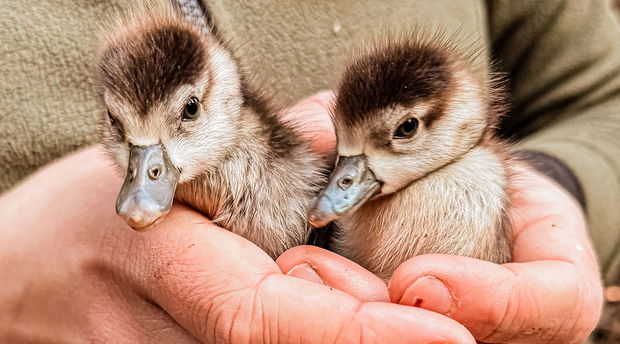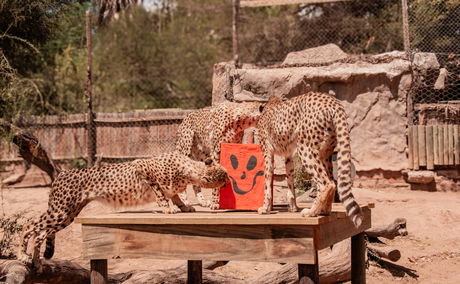This year marked a proud milestone for Cango Wildlife as we took on the role of headline sponsor for the Klein Karoo Business Relay for the first time. On 16 October, Baron van Reede Street came alive as businesses, families, schools and supporters gathered to celebrate fitness, teamwork and community spirit in the heart of Oudtshoorn.
Familiar Visitor With Ancient Roots

The Egyptian Goose (Alopochen aegyptiaca) is a striking waterfowl, easily recognised by its chestnut eye patches, pink legs, and bold chest markings. Despite their name, they are not limited to Egypt. Their name comes from their strong presence along the Nile River in ancient times, where they were revered and often depicted in art and hieroglyphs. They were symbols of fertility and protection, appearing in some of the earliest known bird artwork. Egyptian Geese are native to sub-Saharan Africa and the Nile Valley, thriving in wetlands, rivers, lakes, and open grasslands.
Their adaptability has allowed them to spread into parts of Europe and the Middle East, where introduced populations have become established. In their native range they remain common, but they carry a unique cultural and ecological significance. At Cango Wildlife Ranch, these geese are not part of our resident collection. They are completely wild, free to come and go as they please. Many return to the ranch year after year to raise their young, drawn by the safe environment, available food, and calm waters on site. Watching these seasonal visitors rear their fluffy goslings has become a cherished experience for both our team and our guests.
Here, Egyptian Geese often choose to nest high in the tall Eucalyptus trees that tower over the property. These lofty sites keep eggs safe from ground predators, but they also set the stage for one of nature’s most nerve-testing spectacles. Once the eggs hatch, the tiny goslings take a fearless leap from the nest - sometimes from heights 20+ metres. Despite the heart-stopping drop, they almost always land unharmed, cushioned by their light bodies and soft down, before being led by their parents to the nearest water. A testament to natures resilience and the remarkable adaptations of their species.Just this week, our team arrived to find a cluster of tiny goslings wandering in and around Cheetahland.
Their mother had clearly decided that morning was “moving day” and had evicted them from the nest. Our staff quickly stepped in to guide the little ones to safety and reunite them with mom.
Did You Know?
Goslings have the ability to swim within a day of hatching.
Their loud, honking call is used to defend territory and warn off rivals.
Pairs often mate for life, returning to the same nesting site each year, and both parents take turns guarding and leading their goslings
Egyptian Geese are strong fliers and can travel long distances between feeding and nesting grounds.
Further Reading
October at Cango Wildlife and the Wild Animal Volunteer programme brought a spirited twist to conservation, as staff, volunteers, and our Ambassador Animals joined in a playful celebration of Halloween. From hand-painted enrichment bags to paper-bag mask antics in the veld, this year’s festivities blended fun with purpose, showcasing the creativity and heart behind our animal-care and volunteer teams.
Douglas Eriksen, Chief Executive Officer of Cango Wildlife, represented South Africa at the World Association of Zoos and Aquariums (WAZA) 80th Annual Conference in Cali, Colombia, held in celebration of WAZA’s 90th anniversary. The global event brought together nearly 200 zoos, aquariums, NGOs and biodiversity partners from across the world to advance collaboration in conservation, operational excellence and environmental protection.
















Share This Post